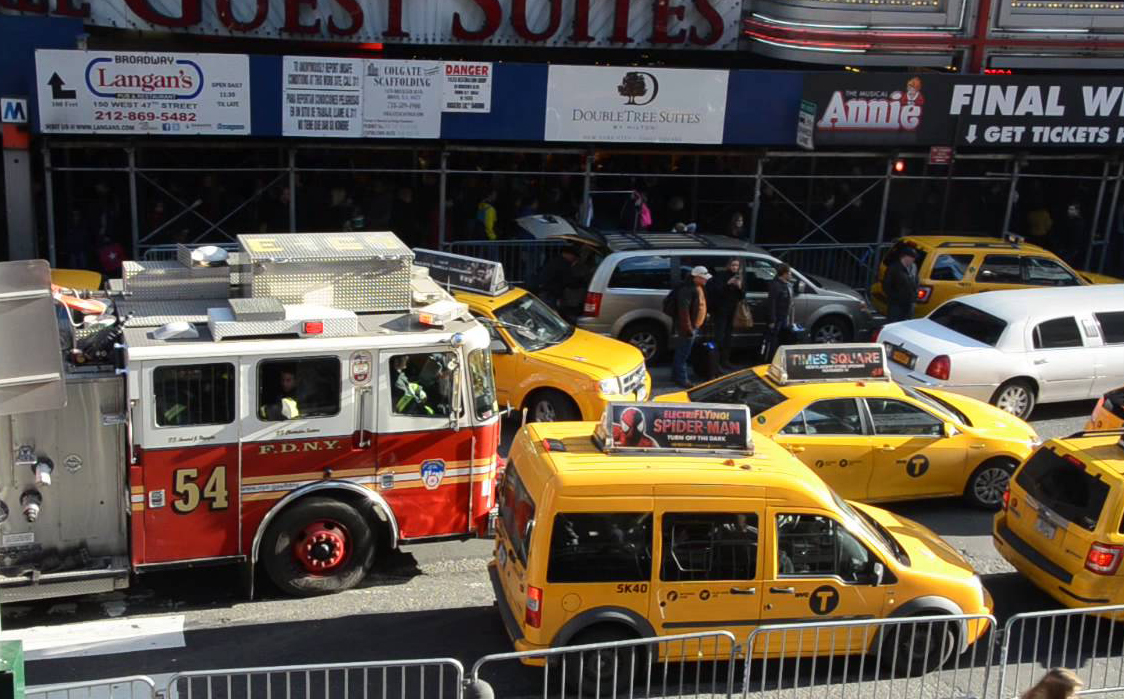9-1-1 we've got an emergency — too many cars.
The city’s fire commissioner blamed the increase in emergency response times on the growing number of cars on the road, saying that it’s a problem the agency is looking to tackle with new technology.
Mayor Adams’s preliminary management report released last week revealed that the average response time to life-threatening medical emergencies by ambulances and fire companies rose from 9:43 in July through October 2022 to 9:52 over the same period last year.
FDNY Commissioner Laura Kavanagh said during Friday's City Hall’s public safety briefing that congestion is the main reason ambulances and fire trucks are slower at reaching fire and medical emergencies. She also blamed the increasing volume of 911 calls.
“There's a couple of reasons for rising response times. The primary one is traffic," she said. "But the other one is rising call volume. So there are just more people calling 911."
Kavanagh added that the FDNY is partnering with researchers from NYU Tandon's Transportation Center to use artificial intelligence technology to predict traffic patterns and figure out the safest, fastest way to get somewhere in a city where car volumes keep going up.
Kavanagh said it would be "really critical" to learn "not only that traffic is growing, but where and why, and in what neighborhoods, and being able to predict even how to place our resources based on those traffic patterns."
"And if we can predict where traffic is going to be the most difficult, we can not only place different resources there but even alternative sorts of resources,” she added, referencing the city’s mini ambulances that currently operate in congested areas such as Times Square.
Data from that study is supposed to yield results by the end of the year, Kavanagh said.
Congestion pricing and traffic modeling expert Charles Komanoff analyzed the latest U.S. Census data last year and found that the number of passenger vehicles owned by residents of the five boroughs jumped by 223,500, increasing by 12.1 percent the number of cars in the city from 1,853,000 to 2,077,000.
But the Adams administration has been hostile to building out more bus and bike lanes, even abandoning plans for major improvements to bus infrastructure in the Bronx because of opposition from local business interests and elected officials, Streetsblog reported months ago.
The news follows the same patterns from years past.
Back in 2019, the FDNY attributed its slower response times — up 25 seconds, or 8.6 percent, since 2015 — to an increase in population, and more construction and congestion, which then-Mayor Bill de Blasio’s management report at the time said was caused specifically by an increase in vehicles.
That explanation was hard to reconcile for some pols and car-zealots, who have long held that street safety measures like bike lanes, pedestrian plazas, and open streets are what cause slower emergency response times.
In 2018, then-Queens Rep. Joe Crowley claimed that bike lanes were to blame for a fire truck that had gotten stuck behind illegally parked cars on Skillman Avenue, where a protected lane had just been installed. The video of the incident, however, showed that illegally parked cars had blocked the firetruck.
And a year later, during a meeting in Brooklyn, an FDNY lieutenant made the same easily debunked accusation.
But in 2020, officials attempted to correct that narrative — during the height of the Covid-19 pandemic, when there were fewer cars on the road, emergency response times bounced back. And the mayor's management report again dispelled that myth that bike lanes are to blame.
“Reductions in travel time may be attributed to lower levels of traffic citywide as a result of the coronavirus pandemic,” said the report at the time.
City Hall did not respond to a request for comment.





